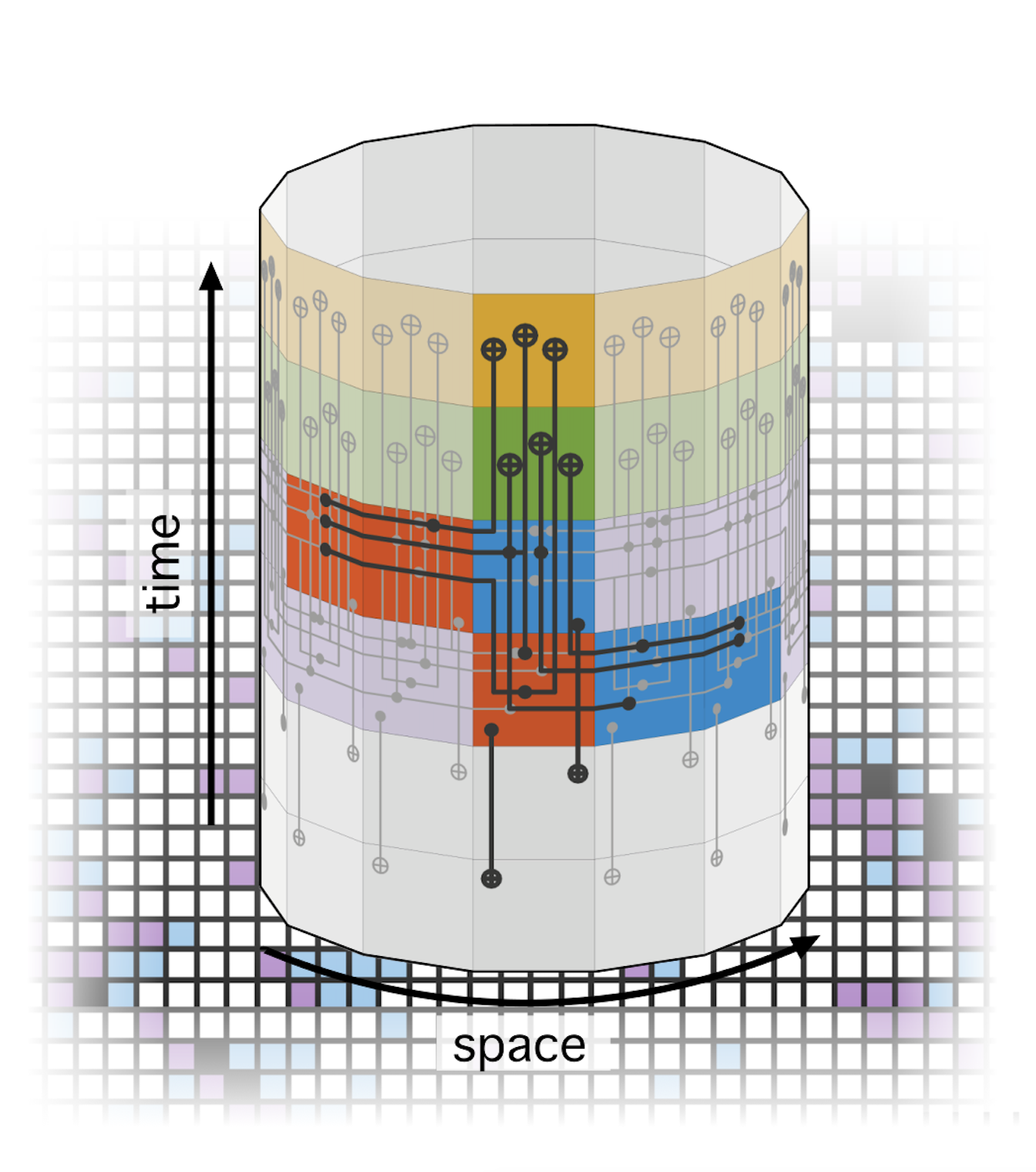In a recent publication titled “Quantum Cellular Automata for Quantum Error Correction and Density Classification,” researchers from M. Müller’s group continue their developments in the field of quantum error correction by investigating its emergence in quantum cellular automata. Cellular automata, which are computational models demonstrating complex behaviors from simple rules, serve as a foundation for this approach. In the simplest example, a cellular automaton consists of a chain of black and white cells that interact with their neighboring cells based on predetermined rules, determining whether they should change color in the next iteration.
Transitioning this concept to the quantum realm, the study replaces classical cells with qubits, allowing for the storage of fragile quantum information within the entire chain. To safeguard this information against noise, the researchers designed the collective dynamics of the quantum cellular automaton (see figure) so that errors are “automatically eaten up” over time as the system evolves. This self-correcting mechanism represents a groundbreaking advancement, as it operates fully autonomously—eliminating the need for measurements, decoding, or external intervention on the qubits.
By leveraging quantum cellular automata for error correction, this work opens up promising new pathways toward the development of large-scale quantum computers, potentially revolutionizing how quantum information is managed and preserved. This research not only enhances our understanding of quantum systems but also contributes to the ongoing quest for practical quantum computing solutions.
